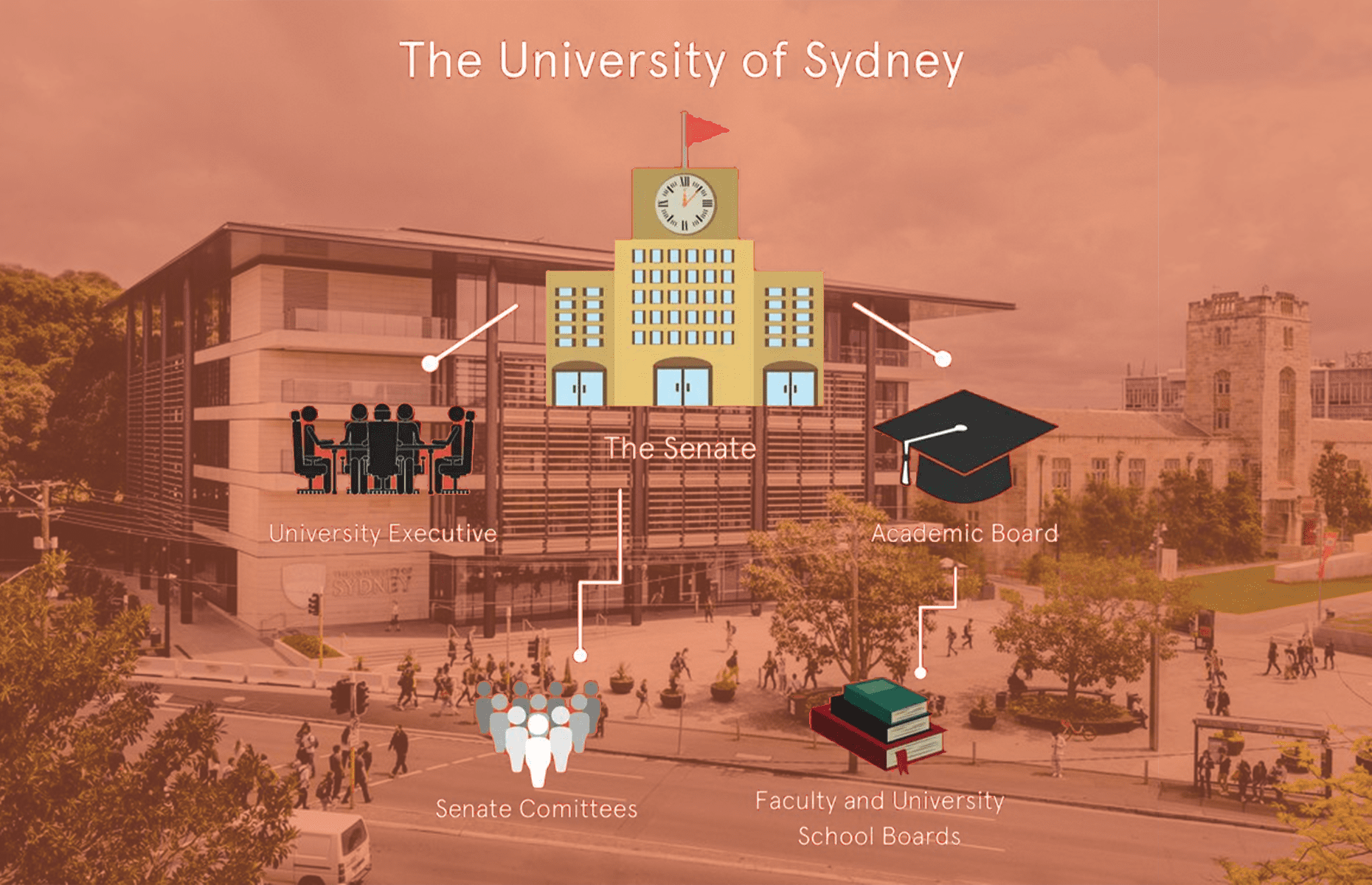Decision-making at the University of Sydney is often pretty mysterious. The University’s institutional architecture is Gaudi-like, to say the least, with myriad Boards and Committees meeting largely away from students’ prying eyes. Nevertheless, the impact of these bodies is not mysterious: we feel the consequences everyday when our courses are cut, special considerations policies change, the COVID-19 response unfolds, and so on. What’s going on behind the scenes, and how are all these decisions made?
The Senate
The University Senate is the highest governing body of the University: they oversee its running, guide its strategic direction, develop its budget, and appoint the Vice-Chancellor. The Senate consists of fifteen representatives, comically termed ‘fellows’. The Chancellor, Vice-Chancellor, and the presiding member of the Academic Board are the three official members of the Senate. They’re joined by seven external fellows — notable members of the public like businesspeople and journalists — five of whom are appointed by the Senate and two who are appointed by the Minister for Education. There are three representatives of University staff (two academic, one non-academic), and two representatives of students (one undergraduate, one postgraduate).
The Senate has regularly been critiqued for its opacity — details of their decisions are not readily available. It has also shrunk in size over the years, with a 30 per cent reduction to the body’s number in 2015. Those changes, which were condemned for being ‘undemocratic’, notably halved the level of elected staff representation in the Senate.
Incidentally, the Senate also appoints two directors on the University of Sydney Union (USU) Board — currently David Wright and Alyssa White. The Senate Appointed Directors (SADs) have been decisive votes in contests over the USU Executive in years past.
Academic Board
The Academic Board (AB) is a central decision-making body in determining the academic standards and procedures of the University. The AB’s key responsibilities include managing assessment and progression requirements, creating awards and scholarships, and overseeing academic reviews. It reports directly to the Senate and advises on teaching and research programs and priorities. The Board’s motto is “Respect is a core value of the Academic Board”.
The AB is a more expansive body than the Senate: it consists of various University managers, like the Vice-Chancellor and Deans, but also contains more representatives of staff and students. The Presidents of the SRC and the Sydney University Postgraduate Representative Association (SUPRA) automatically sit on the Board. They are joined by students and staff in each faculty or school, who are elected by their peers or colleagues respectively.
The AB also has a series of subcommittees which deal specifically with issues like academic quality and standards and reports back to the Board.
The AB has been centre-stage several times in the last few years, as we have seen attempts at big shifts in academic policy. Notably, the campaign against the 12-week semester proposal involved a concerted effort to defeat the proposal in a vote on AB, resulting in a resounding defeat of the policy.
Recent reforms to simple extensions and the imposition of a cap on assessment weights last year were both passed through the AB.
The greater accessibility of the AB for students has meant that these decisions are substantially more prominent than those made by the University Senate. SRC Presidents have communicated proposals on AB to student activists, and have organised lobbying campaigns to convince other staff and students on the Board to vote in students’ interests.
Where else are University decisions made?
Notably, the University is also led by the University Executive, including the Vice-Chancellors and Deputy Vice-Chancellors, who have responsibility over a variety of portfolios: Research, Education, and Strategy, inter alia.
These portfolios carry out many of the daily activities of the University bureaucracy — for example, the Advancement portfolio is tasked with seeking out donations from alumni; the External Engagement portfolio oversees things like recruitment, public relations, and the University’s museums.
Conclusion
The apparent opacity of high-up decision making at our university only benefits those at the top. These systems allow Vice Chancellors to engage in the exorbitant expenditure of University money, and typically fail to respond to the immediate needs of the student body. Students better understanding them is the first step to holding these bodies accountable; the second is voting in Senate elections.
Eight students will run for Senate next month, competing for the elected undergraduate and postgraduate Student Fellow. Voting will open to all undergraduate and postgraduate students from 4 to 18 October.





